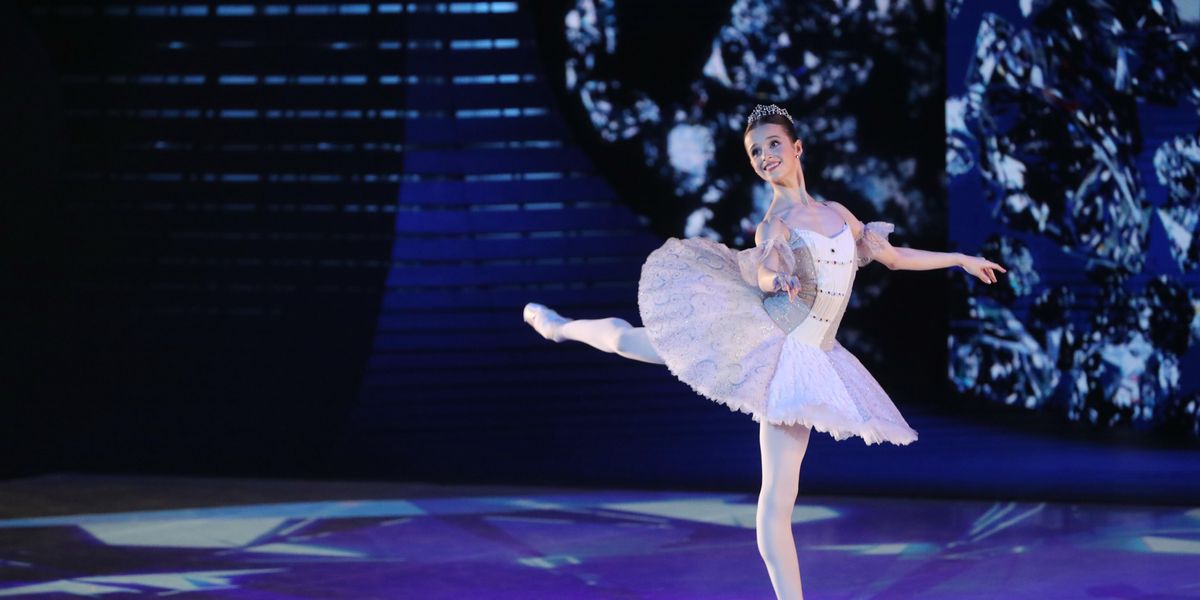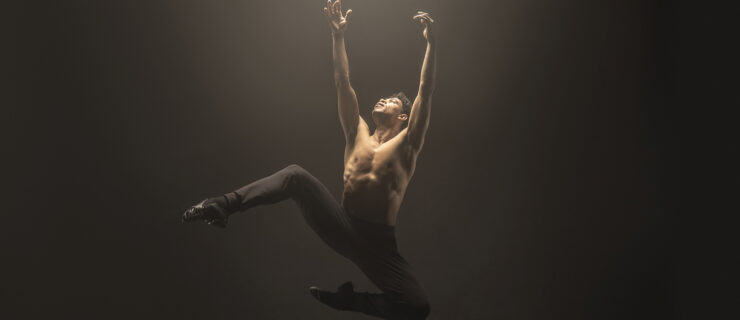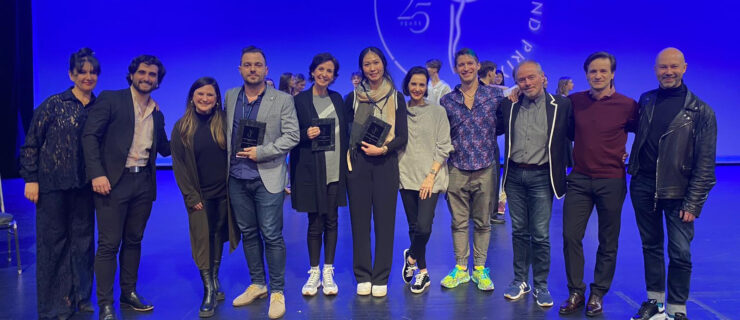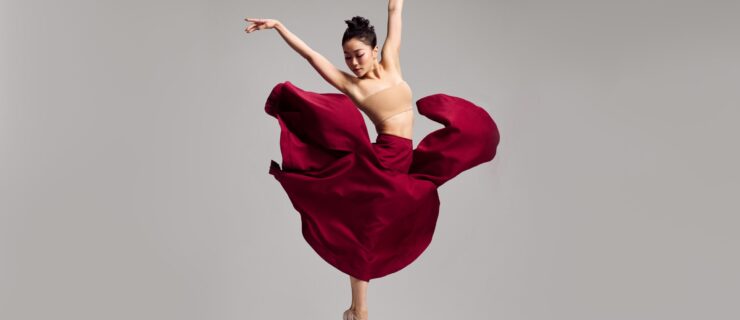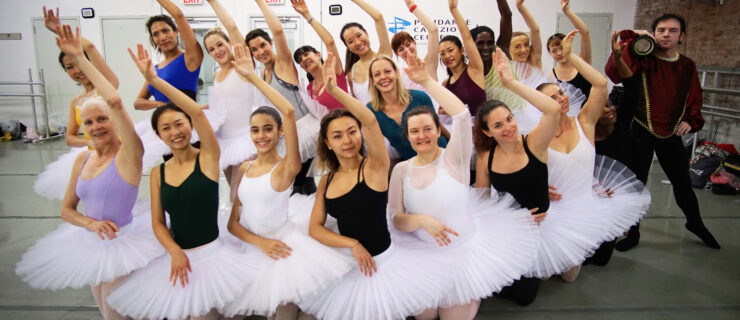Catching Up With Maria Khoreva: The Rising Mariinsky Star on Her TV Competition Win and New Book
The coronavirus pandemic has not slowed down the Mariinsky Ballet’s Maria Khoreva. Although Russia’s Mariinsky Theater was closed in 2020 from March until August, the 20-year-old first soloist used the time in quarantine to her advantage. She wrote a newly published book titled Teach Me Ballet, and won Best Female Dancer on Russia’s hit TV show “Grand Ballet,” a competition which brings young ballet dancers from all parts of the country to the national spotlight. (This season, filmed over the summer, was broadcast on Russia’s arts channel from November 4 to December 19. All seven episodes are now available on YouTube.)
Pointe
spoke with Khoreva to find out more about her experience on the show, her fitness regime during quarantine and her new book.
What was your reaction when you found out that you would be participating in “Grand Ballet”?
Given the situation with the pandemic, I had thought the competition would be canceled. But to my pleasant surprise, we started rehearsals at the end of May, and the filming began in July at a film studio in Moscow. For me, it was a great honor to represent the Mariinsky Theater, and I am very grateful to my director, Yuri Fateev, for believing in me and entrusting me to represent my theater on this project. After a long hiatus from the stage, I was so happy to be back in the studio and onstage doing what I love.
Tell us about the rehearsals.
I was initially supposed to perform with Nikita Korneyev, but after he was injured, Mariinsky Ballet principal dancer Vladimir Shklyarov stepped in and partnered me. It was challenging to get back onstage after the quarantine, but I found the whole rehearsal process to be incredibly inspiring. It was a miracle to prepare six different programs in such a short time—and I am still amazed at this. During the lockdown, we had missed the stage very much, so the eagerness to perform provided us with strength, enthusiasm and motivation.
What was it like performing on the show?
“Grand Ballet” is not an ordinary ballet competition. For instance, there would be times during the performances when a cameraman would run out onto the stage to take a close-up shot and often this would happen at the most crucial moment of our performance. The most important thing for us was to dance as beautifully as we could, and we got used to performing in the film studio versus on the stage in the theater.
The four judges, who are professional ballet artists, gave your corrections in front of millions of TV viewers. How did you feel about it?
I really love and appreciate criticism—this is what allows me to grow. I think that when you are not corrected, you are at a standstill. We listen to criticism every day from our teachers in the studio, so I am very grateful to the jury for their comments and advice. And I think their corrections were also of interest to the TV audience: Learning about intricacies and nuances of a ballet performance was a kind of master class for them, too.
In the first episode, which was called “Calling Card,” you performed a pas de deux from
The Sleeping Beauty. Why did you choose this piece?
I danced my premiere of Aurora at the Mariinsky in February, right before the pandemic. And we all agreed unanimously, including our wonderful coach Elvira Tarasova and the show’s organizers, that this would be the best piece for my “Calling Card” episode.
For the sixth round, you danced Christopher Wheeldon’s
After the Rain
. How did you prepare?
I have always dreamed of working with Christopher Wheeldon. To prepare, we first learned all the choreography with his assistant, and then Christopher himself joined rehearsals via Zoom from his apartment in New York City. We could feel his energy even through a computer screen! It certainly was an unforgettable experience. He gave us a lot of interpretive freedom, encouraging us to tell our own story and show our own personality.

Courtesy Mariinsky Ballet
What were your favorite memories about this competition?
My two favorite moments were the fifth and sixth rounds of the competition. In the fifth round, we premiered a new ballet, created specifically for this project by Alexander Sergeev, our colleague and soloist at the Mariinsky Theater. It is a vigorous work, with cheerful music and virtuosic choreography. Then in the sixth round, we danced After the Rain, which is slow and atmospheric. It was such a joy to prepare and perform such amazing and contrasting contemporary pieces.
Last spring and summer, how did you spend your time during the quarantine? What did you do to keep in shape and stay motivated?
I exercised at home and began sharing my fitness exercises on my YouTube channel. My videos really resonated with the viewers: the number of subscribers increased every day. People enjoyed the fitness classes that we could do together online as a community. I found inspiration both in my subscribers and in my friends, with whom I corresponded on Instagram. We all have become very close during this time.
You also just wrote a book, published in December. What is it about?
The idea to write a book was born during the quarantine. I was approached by the publisher with a proposal to write a practical guide, in which I would share my fitness exercises and methods of doing them. The book is 400 pages long and called Teach Me Ballet. In it, I share my personal experiences and talk about ballet classes as well as fitness exercises. I think it will be interesting not only for ballet professionals, but for everyone who wants to stay fit—the subtitle of the book is How to Educate Your Body. I also share stories that influenced my path in ballet and talk about various gadgets—what helps me onstage and in class—the things that have now become such a part of my regimen that I can’t imagine my life in ballet without them.
The Mariinsky Ballet’s season started up again in the fall. What have been your most memorable performances after the quarantine? How does it feel to perform in a partially filled theater?
I was fortunate to dance in two works by Alexei Ratmansky: the company premiere of Seven Sonatas and Concerto DSCH. For Seven Sonatas, Alexei worked with us via Zoom on the technique, as well as the details and intricacies of the choreography. Dancing in these two ballets was simply pure happiness. And I must say, when we are onstage now, we do not feel that the theater is only partially filled. The audience always welcomes us with great warmth—and even greater appreciation.
